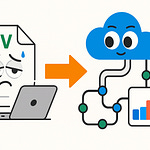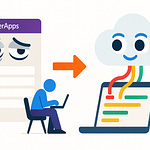Ever had an Azure service fail on a Monday morning? The dashboard looks fine, but users are locked out, and your boss wants answers. By the end of this video, you’ll know the five foundational principles every Azure solution must include—and one simple check you can run in ten minutes to see if your environment is at risk right now.
I want to hear from you too: what was your worst Azure outage, and how long did it take to recover? Drop the time in the comments.
Because before we talk about how to fix resilience, we need to understand why Azure breaks at the exact moment you need it most.
Why Azure Breaks When You Need It Most
Picture this: payroll is being processed, everything appears healthy in the Azure dashboard, and then—right when employees expect their payments—transactions grind to a halt. The system had run smoothly all week, but in the critical moment, it failed. This kind of incident catches teams off guard, and the first reaction is often to blame Azure itself. But the truth is, most of these breakdowns have far more common causes.
What actually drives many of these failures comes down to design decisions, scaling behavior, and hidden dependencies. A service that holds up under light testing collapses the moment real-world demand hits. Think of running an app with ten test users versus ten thousand on Monday morning—the infrastructure simply wasn’t prepared for that leap. Suddenly database calls slow, connections queue, and what felt solid in staging turns brittle under pressure. These aren’t rare, freak events. They’re the kinds of cracks that show up exactly when the business can least tolerate disruption.
And here’s the uncomfortable part: a large portion of incidents stem not from Azure’s platform, but from the way the solution itself was architected. Consider auto-scaling. It’s marketed as a safeguard for rising traffic, but the effectiveness depends entirely on how you configure it. If the thresholds are set too loosely, scale-up events trigger too late. From the operations dashboard, everything looks fine—the system eventually catches up. But in the moment your customers needed service, they experienced delays or outright errors. That gap, between user expectation and actual system behavior, is where trust erodes.
The deeper reality is that cloud resilience isn’t something Microsoft hands you by default. Azure provides the building blocks: virtual machines, scaling options, service redundancy. But turning those into reliable, fault-tolerant systems is the responsibility of the people designing and deploying the solution. If your architecture doesn’t account for dependency failures, regional outages, or bottlenecks under load, the platform won’t magically paper over those weaknesses. Over time, management starts asking why users keep seeing lag, and IT teams are left scrambling for explanations.
Many organizations respond with backup plans and recovery playbooks, and while those are necessary, they don’t address the live conditions that frustrate users. Mirroring workloads to another region won’t protect you from a misconfigured scaling policy. Snapping back from disaster recovery can’t fix an application that regularly buckles during spikes in activity. Those strategies help after collapse, but they don’t spare the business from the painful reality that users were failing in the moment they needed service most.
So what we’re really dealing with aren’t broken features but fragile foundations. Weak configurations, shortcuts in testing, and untested failover scenarios all pile up into hidden risk. Everything seems fine until the demand curve spikes, and then suddenly what was tolerable under light load becomes full-scale downtime. And when that happens, it looks like Azure failed you, even though the flaw lived inside the design from day one.
That’s why resilience starts well before failover or backup kicks in. The critical takeaway is this: Azure gives you the primitives for building reliability, but the responsibility for resilient design sits squarely with architects and engineers. If those principles aren’t built in, you’re left with a system that looks healthy on paper but falters when the business needs it most.
And while technical failures get all the attention, the real consequence often comes later—when leadership starts asking about revenue lost and opportunities missed. That’s where outages shift from being a problem for IT to being a problem for the business. And that brings us to an even sharper question: what does that downtime actually cost?
The Hidden Cost of Downtime
Think downtime is just a blip on a chart? Imagine this instead: it’s your busiest hour of the year, systems freeze, and the phone in your pocket suddenly won’t stop. Who gets paged first—your IT lead, your COO, or you? Hold that thought, because this is where downtime stops feeling like a technical issue and turns into something much heavier for the business.
First, every outage directly erodes revenue. It doesn’t matter if the event lasts five minutes or an hour—customers who came ready to transact suddenly hit an empty screen. Lost orders don’t magically reappear later. Those moments of failure equal dollars slipping away, customers moving on, and opportunities gone for good. What’s worse is that this damage sticks—users often remember who failed them and hesitate before trying again. The hidden cost here isn’t only what vanished in that outage, it’s the missed future transactions that will never even be attempted.
But the cost doesn’t stop at lost sales. Downtime pulls leadership out of focus and drags teams into distraction. The instant systems falter, executives shift straight into crisis mode, demanding updates by the hour and pushing IT to explain rather than resolve. Engineers are split between writing status reports and actually fixing the problem. Marketing is calculating impact, customer service is buried in complaints, and somewhere along the line, progress halts because everyone’s attention is consumed by the fallout. That organizational thrash is itself a form of cost—one that isn’t measured in transactions but in trust, credibility, and momentum.
And finally, recovery strategies, while necessary, aren’t enough to protect revenue or reputation in real time. Backups restore data, disaster recovery spins up infrastructure, but none of it changes the fact that at the exact point your customers needed the service, it wasn’t there. The failover might complete, but the damage happened during the gap. Customers don’t care whether you had a well-documented recovery plan—they care that checkout failed, their payment didn’t process, or their workflow stalled at the worst possible moment. Recovery gives you a way back online, but it can’t undo the fact that your brand’s reliability took a hit.
So what looks like a short outage is never that simple. It’s a loss of revenue now, trust later, and confidence internally. Reducing downtime to a number on a reporting sheet hides how much turbulence it actually spreads across the business. Even advanced failover strategies can’t save you if the very design of the system wasn’t built to withstand constant pressure.
The simplest way to put it is this: backups and DR protect the infrastructure, but they don’t stop the damage as it happens. To avoid that damage in the first place, you need something stronger—resilience built into the design from day one.
The Foundation of Unbreakable Azure Designs
What actually separates an Azure solution that keeps running under stress from one that grinds to a halt isn’t luck or wishful thinking—it’s the foundation of its design. Teams that seem almost immune to major outages aren’t relying on rescue playbooks; they’ve built their systems on five core pillars: Availability, Redundancy, Elasticity, Observability, and Security. Think of these as the backbone of every reliable Azure workload. They aren’t extras you bolt on, they’re the baseline decisions that shape whether your system can keep serving users when conditions change.
Availability is about making sure the service is always reachable, even if something underneath fails. In practice, that often means designing across multiple zones or regions so a single data center outage doesn’t take you down. It’s the difference between one weak link and a failover that quietly keeps users connected without them ever noticing. For your own environment, ask yourself how many of your customer-facing services are truly protected if a single availability zone disappears overnight.
Redundancy means avoiding single points of failure entirely. It’s not just copies of data, but copies of whole workloads running where they can take over instantly if needed. A familiar example is keeping parallel instances of your application in two different regions. If one region collapses, the other can keep operating. Backups are important, but backups can’t substitute for cross-region availability during a live regional outage. This pillar is about ongoing operation, not just restoration after the fact.
Elasticity, or scalability, is the ability to adjust to demand dynamically. Instead of planning for average load and hoping it holds, the system expands when traffic spikes and contracts when it quiets down. A straightforward case is an online store automatically scaling its web front end during holiday sales. If elasticity isn’t designed correctly—say if scaling rules trigger too slowly—users hit error screens before the system catches up. Elasticity done right makes scaling invisible to end users.
Observability goes beyond simple monitoring dashboards. It’s about real-time visibility into how services behave, including performance indicators, dependencies, and anomalies. You need enough insight to spot issues before your users become your monitoring tool. A practical example is using a combination of logging, metrics, and tracing to notice that one database node is lagging before it cascades into service-wide delays. Observability doesn’t repair failures, but it buys you the time and awareness to keep minor issues from becoming outages.
And then there’s Security—because a service under attack or with weak identity protections isn’t resilient at all. The reality is, availability and security are tied closer than most teams admit. Weak access policies or overlooked protections can disrupt availability just as much as infrastructure failure. Treat security as a resilience layer, not a separate checklist. One misconfiguration in identity or boundary controls can cancel out every gain you made in redundancy or scaling design.
When you start layering these five pillars together, the differences add up. Multi-region architectures provide availability, redundancy ensures continuity, elasticity allows growth, observability exposes pressure points, and security shields operations from being knocked offline. None of these pillars stand strong alone, but together they form a structure that can take hits and keep standing. It’s less about preventing every possible failure, and more about ensuring failures don’t become outages.
The earthquake analogy still applies here: you don’t fix resilience after disaster, you design the system to sway and bend without breaking from the start. And while adding regions or extra observability tools does carry upfront cost, the savings from avoiding just one high-impact outage are often far greater. The most expensive system is usually the one that tries to save money by ignoring resilience until it fails.
Here’s one simple step you can take right now: run a quick inventory of your critical workloads. Write down which ones are running in only a single region, and circle any that directly face customers. Those are the ones to start strengthening. That exercise alone often surprises teams, because it reveals how much risk is silently riding on “just fine for now.”
When you look at reliable Azure environments in the real world, none of them are leaning purely on recovery plans. They keep serving users even while disruptions unfold underneath, because their architecture was designed on these pillars from the beginning. And while principles give you the blueprint, the natural question is: what has Microsoft already put in place to make building these pillars easier?
The Tools Microsoft Built to Stop Common Failures
Microsoft has already seen the same patterns of failure play out across thousands of customer environments. To address them, they built a set of tools directly into Azure that help teams reduce the most common risks before they escalate into outages. The challenge isn’t that the tools aren’t there—it’s that many organizations either don’t enable them, don’t configure them properly, or assume they’re optional add-ons rather than core parts of a resilient setup.
Take Azure Site Recovery as an example. It’s often misunderstood as extra backup, but it’s designed for a much more specific role: keeping workloads running by shifting them quickly to another environment when something goes offline. This sort of capability is especially relevant where downtime directly impacts transactions or patient care. Before including it in any design, verify the exact features and recovery behavior in Microsoft’s own documentation, because the value here depends on how closely it aligns with your workload’s continuity requirements.
Another key service is Traffic Manager. Tools like this can direct user requests to multiple endpoints worldwide, and if one endpoint becomes unavailable, traffic can be redirected to another. Configured in advance, it helps maintain continuity when users are spread across regions. It’s not automatic protection—you have to set routing policies and test failover behavior—but when treated as part of core design and not a bolt-on, it reduces the visible impact of regional disruptions. Always confirm the current capabilities and supported routing methods in the product docs to avoid surprises later.
Availability Zones are built to isolate failures within a region. By distributing workloads across multiple zones, services can keep running if problems hit a single facility. This is a good fit when you don’t want the overhead of full multi-region deployment but still need protection beyond a single data center. Many teams ignore zones in production aside from test labs, often because it feels easier to start in a single zone. That shortcut creates unnecessary risk. Microsoft’s own definitions of how zones protect against localized failure should be the reference point before planning production architecture.
Observability tools like Azure Monitor move the conversation past simple alert thresholds. These tools can collect telemetry—logs, metrics, traces—that surface anomalies before end users notice them. Framing this pillar as a core resilience tool is crucial. If the first sign of trouble is a customer complaint, that’s a monitoring gap, not a platform limitation. To apply Azure Monitor effectively, think of it as turning raw data into early warnings. Again, verify what specific visualizations and alerting options are available in the current release because those evolve over time.
The one tool that often raises eyebrows is Chaos Studio. At first glance, it seems strange to deliberately break parts of your own environment. But running controlled fault-injection tests—shutting down services, adding latency, simulating outages—exposes brittle configurations long before real-world failures reveal them on their own. This approach is most valuable for teams preparing critical production systems where hidden dependencies could otherwise stay invisible. Microsoft added this specifically because failures are inevitable; the question is whether you uncover them in practice or under live customer demand. As always, verify current supported experiments and safe testing practices on official pages before rolling anything out.
The common thread across all of these is that Microsoft anticipated recurring failure points and integrated countermeasures into Azure’s toolbox. The distinction isn’t whether the tools exist—it’s whether your environment is using them properly. Without configuration and testing, they provide no benefit. Tools are only as effective as their configuration and testing—enable and test them before you need them. Otherwise, they exist only on paper, while your workloads remain exposed.
Here’s one small step you can try right after this video: open your Azure subscription and check whether at least one of your customer-facing resources is deployed across multiple zones or regions. If you don’t see any, flag it for follow-up. That single action often reveals where production risk is quietly highest.
These safeguards are not theoretical. When enabled and tested, they change whether customers notice disruption or keep moving through their tasks without missing a beat. But tools in isolation aren’t enough—the only real proof comes when environments are under stress. And that’s where the story shifts, because resilience doesn’t just live in design documents or tool catalogs, it shows up in what happens when events hit at scale.
Resilience in the Real World
Resilience in the real world shows what design choices actually deliver when conditions turn unpredictable. The slide decks and architectural diagrams are one thing, but the clearest lessons come from watching systems operate under genuine pressure. Theory can suggest what should work, but production environments tell you what really does.
Take an anonymized streaming platform during a major live event. On a regular day, traffic was predictable. But when a high-profile match drew millions, usage spiked far beyond the baseline. What kept them running wasn’t extra servers or luck—it was disciplined design. They spread workloads across multiple Azure regions, tuned autoscaling based on past data, and used monitoring that triggered adjustments before systems reached the breaking point. The outcome: viewers experienced seamless streaming while less-prepared competitors saw buffering and downtime. The lesson here is clear—availability, redundancy, and proactive observability work best together when traffic surges.
Now consider a composite healthcare scenario during a cyberattack. The issue wasn’t spikes in demand—it was security. Attackers forced part of the system offline, and even though redundancy existed, services for doctors and patients still halted while containment took place. Here, availability had been treated as a separate concern from security, leaving a major gap. The broader point is simple: resilience isn’t just about performance or uptime—it includes protecting systems from attacks that make other safeguards irrelevant. So what to do? Bake security into your availability planning, not as an afterthought but as a core design decision.
These examples show how resilience either holds up or collapses depending on whether principles were fully integrated. And this is where a lot of organizations trip: they plan for one category of failure but not another. They only model for infrastructure interruptions, not malicious events. Or they validate scaling at average load without testing for unpredictable user patterns. The truth is, the failures you don’t model are the ones most likely to surprise you.
The real challenge isn’t making a system pass in controlled conditions—it’s preparation for the messy way things fail in production. Traffic spikes don’t wait for your thresholds to kick in. Services don’t fail one at a time. They cascade. One lagging component causes retries, retries slam the next tier, and suddenly a blip multiplies into systemic collapse. This is why testing environments that look “stable” on paper aren’t enough. If you don’t rehearse these cascades under realistic conditions, you won’t see the cracks until your users are already experiencing them.
It’s worth noting that resilience doesn’t only protect systems in emergencies—it improves everyday operations too. Continuous feedback loops from monitoring help operators correct small issues before they spiral. Microservice boundaries contain errors and reduce latency even at normal loads. Integrated security with identity systems not only shields against threats but also cuts friction for legitimate users. Resilient environments don’t just resist breaking; they actually deliver more predictable, smoother performance day to day.
Nothing replaces production-like testing. Run chaos and load tests under conditions that mimic reality as closely as possible, because neat lab simulations can’t recreate odd user behavior, hidden dependencies, or sudden patterns that only emerge at scale. The goal isn’t to induce failure for the sake of it—it’s to expose weak points safely, while you still have time to fix them. Running those tests feels uncomfortable, but not nearly as uncomfortable as doing the diagnosis at midnight when revenue and reputation are slipping away.
Real resilience comes down to proof. It’s not the architecture diagram, not the presentation, but how well the system holds in the face of real disruptions. Whether that means a platform keeping streams online during an unexpected surge or a hospital continuing care while defending against attack, the principle doesn’t change: resilience is about failures being contained, managed, and invisible to the user wherever possible.
When you test under realistic conditions you either prove your design or you find the gaps you need to fix—and that’s the whole point of resilience.
Conclusion
Resilient Azure environments aren’t about blocking every failure; they’re about designing systems that keep serving users even when something breaks. That’s the real benchmark—systems built to thrive, not just survive.
The foundation rests on five pillars: availability, redundancy, elasticity, observability, and security. Start by running one immediate check—inventory which of your customer-facing workloads still run in only a single region. That alone exposes where risk is highest.
Drop the duration of your worst outage in the comments, and if this breakdown of principles helped, like the video and subscribe for more Azure resilience tactics. Resilience is design, not luck.











